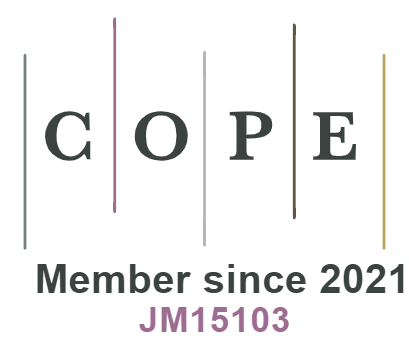Dlaczego walczyłem dla Kupidyna, czyli o walce o średniowieczne rymy w polskim przekładzie Carmina Rivipullensia
DOI:
https://doi.org/10.18778/1733-0319.23.09Słowa kluczowe:
Carmina Rivipullensia, the Ripoll Love-Songs, medieval Latin lyrical poetry, translationAbstrakt
Carmina Rivipullensia is the only existing collection of medieval Latin love lyrical poetry deriving from Spain. It is a unique testimony of skilful and creative use of the Latin poetic tradition on the Iberian Peninsula. Songs have not yet been translated into Polish. The aim of the article is to present a collection which is little-known in Poland along with a proposed translation of one of the poems and a commentary on literary devices applied in the translation as well as dilemmas faced by a contemporary translator.
Bibliografia
Cancionero de Ripoll. Carmina Rivipullensia (1986). Tekst, tłum., wstęp i komentarz J.L. Moralejo. Barcelona: BOSCH.
Google Scholar
Latzke, T. (1974–1975). “Die Carmina erotica del Ripollsammlung”. Mittellateinisches Jahrbuch 10. 138–201.
Google Scholar
Axer, J. (red.) (2004). Łacina jako język elit. Warszawa: OBTA, DiG.
Google Scholar
Barańczak, S. (2004). Mały, lecz maksymalistyczny manifest translatologiczny, albo: Tłumaczenie się z tego, że tłumaczy się wiersze również w celu wytłumaczenia innym tłumaczom, iż dla większości tłumaczeń wierszy nie ma wytłumaczenia. W: S. Barańczak. Ocalone w tłumaczeniu. Szkice o warsztacie tłumacza poezji z dodatkiem małej antologii przekładów-problemów. Kraków: Wydawnictwo a5. 13–62.
Google Scholar
Bodelón, S. (1989). Literatura Latina de la Edad Media en España. Madryt: Ediciones Akal.
Google Scholar
Bourgain, P., Hubert, M.-C. (2005). Le latin médiéval. Turnhout: Brepols.
Google Scholar
Bukowski, P., Heydel, M. (2009) (red.). Współczesne teorie przekładu. Antologia. Kraków: Znak.
Google Scholar
Cuadra García, F. (2011). Situación de la ortografía latina en España durante los siglos XII–XIII. W: Martínez Gázquez J. et al. (red.). Estudios de latín medieval hispánico. Actas del V Congreso Internacional de Latín Medieval Hispánico. Barcelona 7–10 de septiembre de 2009. Firenze: SISMEL edizioni del Galluzzo.
Google Scholar
Curtius, E.R. (1997). Literatura europejska i łacińskie średniowiecze. Przeł. A. Borowski. Kraków: Universitas.
Google Scholar
Deyermond, A. (1989). „Traditional Images and Motifs in the Medieval Latin Lyric Author(s)ˮ. Romance Philology 43 (1). 5–28.
Google Scholar
Dłuska, M. (2001). Średniowieczny wiersz polski (Sylabizm względny i asylabizm). W: M. Dłuska, Prace wybrane, t. 1: Odmiany i dzieje wiersza polskiego. Kraków: Universitas.
Google Scholar
Dronke, P. (1965). Medieval Latin and the Rise of European Love-Lyric. Oxford: Yale University Press.
Google Scholar
Dronke, P. (1979). “The Interpretation of the Ripoll Love-Sogs” Romance Philology 33. 14–42.
Google Scholar
García Villoslada, R. (1975). La poesía rítmica de los goliardos medievales. Madrid: Fundación Universitaria Española, Seminario Nebrija.
Google Scholar
Huizinga, J. (1996). Jesień średniowiecza. Przeł. T. Brzostowski. Warszawa: Państwowy Instytut Wydawniczy.
Google Scholar
Latin Dictionary Headword Search Results, http://www.perseus.tufts.edu/hopper/resolveform?redirect=true&display=&lang=Latin&corpus=Roman&author=*Roman [data dostępu 10.06.2020].
Google Scholar
Lopetegui Semperena, G. (2011). El uso de las fuentes y otros recursos poéticos en algunas composiciones del “Cancionero de Ripoll”. W: J. Martínez Gázquez et al. (red.). Estudios de latín medieval hispánico. Actas del V Congreso Internacional de Latín Medieval Hispánico. Barcelona 7–10 de septiembre de 2009. Firenze: SISMEL edizioni del Galluzzo.
Google Scholar
Łuka, A. (2018). „Izometrycznie czy z rymem? Nowy przekład zbioru Basia (Pocałunki) Ianusa Secundusa”. Translatorica & Translata 1. 7–15.
Google Scholar
DOI: https://doi.org/10.18778/2544-9796.01.01
Marcos Casquero, M.A. (1998). Evolución histórica de la lírica latina medieval. W: Pérez González M. (red.). Actas. Segundo Congreso Hispánico de Latín Medieval. León 11–14 de Noviembre de 1997, t. I. León: Universidad de León.
Google Scholar
Martínez Gázquez, J., Florio R. (red.). (2006). Antología del Latín Cristiano y Medieval. Introducción y Textos. Bahía Blanca: Editorial de la Universidad Nacional del Sur.
Google Scholar
Montero Cartelle, E. (1973). Aspectos léxicos y literarios del latín erótico. Santiago de Compostela: Universidad de Santiago de Compostela, Facultad de Filosofía y Letras.
Google Scholar
Montero Cartelle, E. (2001). Carmina Burana. Los poemas de amor. Madryt: Akal.
Google Scholar
Moralejo, J.L. (1986). Introducción. W: Cancionero de Ripoll. Carmina Rivipullensia. Tekst, tłum., wstęp i komentarz J.L. Moralejo. Barcelona: BOSCH. 19–125.
Google Scholar
Myśliwiec H. (1959). Zarys wersyfikacji łacińskiej średniowiecza. W: Dłuska M., Strzelecki W. (red.). Metryka grecka i łacińska. Wrocław: Zakład Narodowy im. Ossolińskich.
Google Scholar
Offermanns W. (1970). Die Wirkung Ovids auf die literarische Sprache del lateinischen Liebesdichtung des 11. Und 12. Jahrhunderts. Wuppertal: Henn.
Google Scholar
Piechal M. (1988). Słowo wstępne. W: Carmina Burana. Wybór i układ C. Orff, spolszczył M. Piechal. Szczecin: Glob.
Google Scholar
Plezia, M. et al. (red.). (1953–). Słownik łaciny średniowiecznej w Polsce. Lexicon Mediae et Infimae Latinitatis Polonorum. Kraków: Polska Akademia Nauk (10.06.2020).
Google Scholar
Pszczołowska, L. (1981). „Semantyka form wierszowych”. Pamiętnik Literacki LXXII, z. 4. 191–203.
Google Scholar
Pszczołowska, L., Urbańska, D. (red.). (1992). Słowiańska metryka porównawcza IV. Wiersz przekładu. Mickiewicz i Puszkin. Wrocław: Zakład Narodowy im. Ossolińskich.
Google Scholar
Sánchez Salor, E. (2011). Mezcla de tradiciones en la literatura latina medieval. W: Martínez Gázquez J. et al. (red.). Estudios de latín medieval hispánico. Actas del V Congreso Internacional de Latín Medieval Hispánico. Barcelona 7–10 de septiembre de 2009. Firenze: SISMEL edizioni del Galluzzo.
Google Scholar
Skwara, E. (2012). „Kłopotliwi mistrzowie, czyli o rymotwórcach tłumaczących literaturę antyczną”. Przekładaniec 26. 150–164.
Google Scholar
Włodarski, M. (2007). Wstęp. W: Średniowieczna poezja łacińska w Polsce. Wrocław: Zakład Narodowy im. Ossolińskich.
Google Scholar
Włodarski, M. (red.). (2007). Średniowieczna poezja łacińska w Polsce. Wrocław: Zakład Narodowy im. Ossolińskich.
Google Scholar
Zabłocki, S. (2010). Literatura nowołacińska. Średniowiecze – renesans – barok. Warszawa: Wydawnictwo Neriton.
Google Scholar
Ziolkowski, J. (2011). ¿Qué es la literatura latina medieval hispánica? Mirada desde fuera. W: Martínez Gázquez J. et al. (red.). Estudios de latín medieval hispánico. Actas del V Congreso Internacional de Latín Medieval Hispánico. Barcelona 7–10 de septiembre de 2009. Firenze: SISMEL edizioni del Galluzzo.
Google Scholar
Pobrania
Opublikowane
Jak cytować
Numer
Dział
Licencja

Utwór dostępny jest na licencji Creative Commons Uznanie autorstwa – Użycie niekomercyjne – Bez utworów zależnych 4.0 Międzynarodowe.












